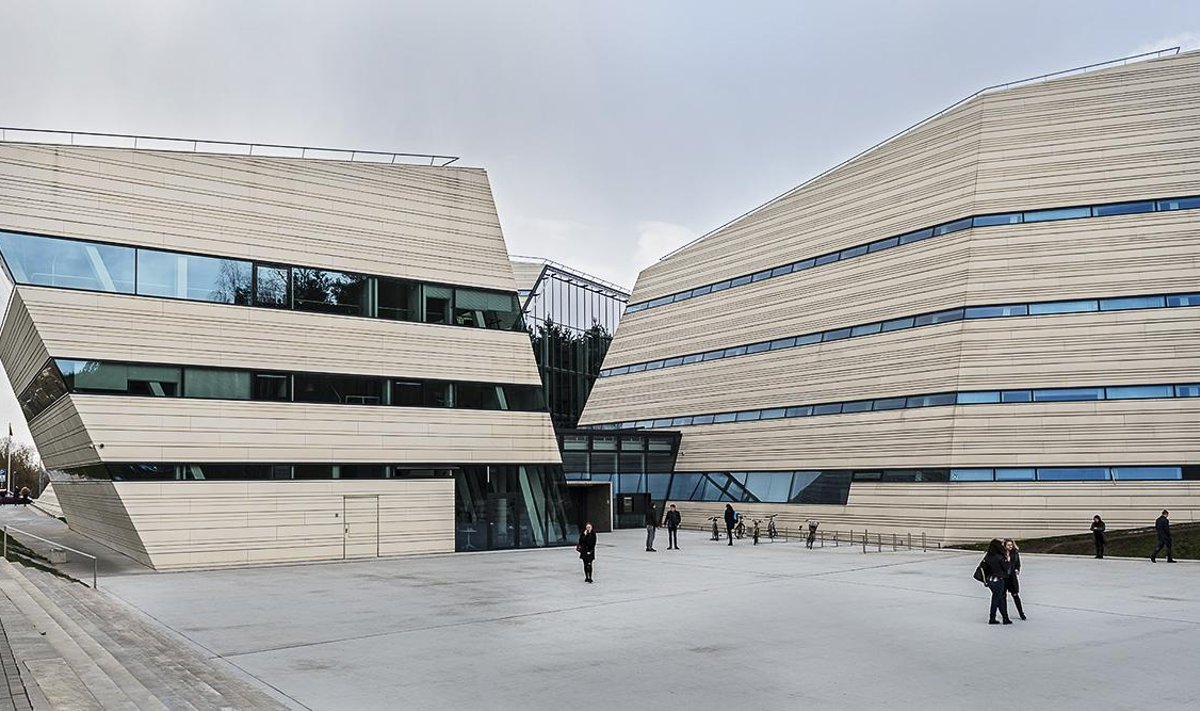The rich diverse past of Vilnius and many new, contemporary architectural marvels were all part of this weekend's third edition of Open House Vilnius. With seldom-accessible buildings, cutting-edge building technologies, even concealed vaults and hiding spaces, there was something to please the most discriminating visitor. 'If the walls only could speak' came often too mind visiting some building that had large parts going back more than 500 years.
The two-day event was extremely well-attended. Open House Vilnius is part of a global initiative in 30 locations around the world. With a large group of volunteers and sponsors, a dedicated group offers once a year a unique chance to see 50 buildings in Vilnius. It is a large cross-selection to choose from, but with something for every taste and interest. Some of these buildings are generally not open to the public, whilst others require special permission.
This edition of Open House saw some government buildings opening their doors, including the Prime Minister's office, the Defence Ministry, the National Parliament, but also embassies, university buildings, theatres, museums and literature related venues. A smorgasbord of distinctive structures and one that requires some planning.
To help with the selection Open House Vilnius has a smartly organised website providing comprehensive information in English and Lithuanian about each building and location with the history of the building, its purpose, the architects, opening hours and a practical map the assist the visitors in locating the building.
On a mainly cold weekend, visitors experienced several times four seasons in one day. Some sunshine, some wet snow and sleet, and on occasion both at the same time. With temperatures rarely rising above 5C it was the wind that presented a unique challenge to some of the volunteer mentors. The new Quadrum building, on the right bank of the Neris, was constructed to minimise the effect of the wind, but the near storm conditions on Saturday morning came close to challenging that assertion.
Some buildings had hundreds of visitors discovering attractive facades, exterior beautiful settings, and revealing interiors. Other, such as the Kazy Varnelis Musem and former residence of this great Lithuanian painter, had more intimate tours.
Hundreds of enthusiastic and devoted volunteers and with some building experts on hand that provided often-expert insights into older and newer buildings. Many of the volunteer mentors are real-life architectures or architectural students and had spent months preparing to delight visitors with their in-depth knowledge of some remarkable places.
Having attended a recent book presentation about 'Vilnius City of Strangers' by Laimonas Briedis about the origins of the city seen from a geographical approach and diversity, the mixture of origin and history was well represented during Open House Vilnius. The rich Jewish origins left their mark, as did the brutal architecture of the Soviet occupation. The haring of best practices shows up in the newer buildings, as are the influences from various parts of the world that share a similar climate.
The new Vilnius University science building and library are good examples. The Vilnius botanical garden's Green House Plant is another case in point, displaying its newest green building with energy efficiency in a beautiful setting blending in with the green environment. Green not just in colour, but in every respect an outstanding representation of the energy efficiency.
The K29 business centre, the Treatwell offices, and the Quadrum buildings incorporate contemporary design combined with the latest in energy and soundproofing efficiency whilst ensuring optimisation of the workspace. The Quadrum building, a Norwegian investment, represents all what one admires in the Scandinavian quality of life approach with an in-house convenience shop, sporting facility and a day-care centre on location. A complex that was designed to stimulate work and creativity in the process. The garage also offers refuelling facilities for electric cars.
The K29 building looks from a distance a bit like a modern sports stadium. The interior could not be further from that idea. The iconic building that houses the Nasdaq and other financial companies collected a cornucopia of architectural and interior design prizes. Rightfully so.
None of these modern icons could contrast more sharply with the elegance of Vileišis Palace, nowadays the Lithuanian Institute of Literature and Folklore. A building frequently visited in the past by the great Lithuanian historian, statesman, and educator, Jonas Basanavičius. The building dating back to 1906 was restored twice during the last 25 years. Built by Petras Vileišis, the neo-Baroque structure was the first to have a bathroom and electricity in Vilnius. The inside is just as glorious as the outside with 'central heating', in that Dutch-tile stoves kept the three floors heated. The unique and innovative building today represents what its original owner had in mind, a place to promote and foster the Lithuanian identity.
